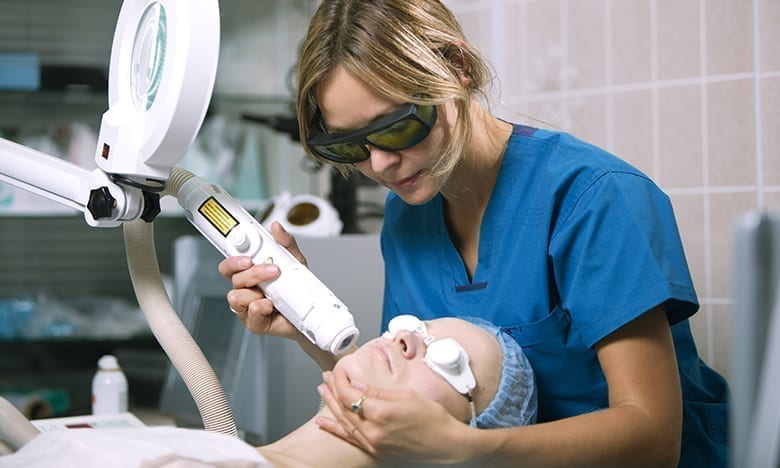Laser Therapy Targets Unsightly Marks

The advent of laser technology has given many convenient opportunities even to plastic surgery. Laser is the easiest procedure for the removal of birthmarks, scars or tattoos, which you may find unattractive or no more important to you.
Laser removal of birthmarks or tattoos is convenient, quickly done and, in accordance with other removal procedures, pain free. Those procedures in previous years were invasive and was included with greater than a little pain. Dermabrasion or surgical excision were the only techniques then of removing these marks. Dermabrasion called for sanding off the mark and like surgical excision, sometimes called for a skin graft consequently.
We are fortunate that laser removal is now the norm. Lightforce Medical laser therapy breaks up the birthmark or tattoo with highly concentrated light pulses. The design of the laser targets only the area to be treated, with frequencies that may save the encompassing tissue. When the birthmark or tattoo has been disintegrated by the laser, your skin's natural immune system works to take out the fragmented pieces from the skin. This procedure is fantastic for areas with good blood circulation as the blood will effect in the rapid removal of these pieces. There is less circulation in the hands and feet that makes it harder to treat in this manner.
Board certification
A skilled cosmetic surgeon with board certification should be the only one to do your laser therapy to take out any unsightly marks. Your skin layer will first be assessed as to the area to be treated, number of treatments necessary and the amount of success you may expect. As far as tattoos are concerned, the black ones are better to remove compared to the colored because these need several treatments for total removal.

Actual Operation
The laser light pulses would feel just like rubber bands snapping against your skin. People don't usually find this painful. You can be told to pre-treat the mark with anti-inflammatory and anesthetic cream prior to the procedure. If the pain is more than you can handle, your doctor will prescribe a local anesthetic.
Laser therapy would take from one to ten sessions (depending on the tattoo or birthmark) every four to eight weeks. Because the number of sessions increases, the laser pierces more, resulting in the tattoo or birthmark getting lighter after every session.
Recovery
Your surgeon will apply anti-bacterial ointment on the region and bandage your skin layer, with the instructions to lift the treated area in order to avoid swelling. Additionally, you will be instructed to avoid exposing that area to direct sun, as the procedure would have rendered it ultra sensitive to UV rays.
After the procedure, many people reported feeling some sunburn sensation and localized redness in the treated area. This can sometimes turn into scab that may recede in two weeks' time. Anti-inflammatories can definitely minimize your pain, but it is still best for you to talk with your surgeon before taking any medications.
Laser therapy resulting in side effects is really a rare occurrence. Dark-skinned individuals may experience loss of pigmentation, should you be one, better consult with your doctor.
